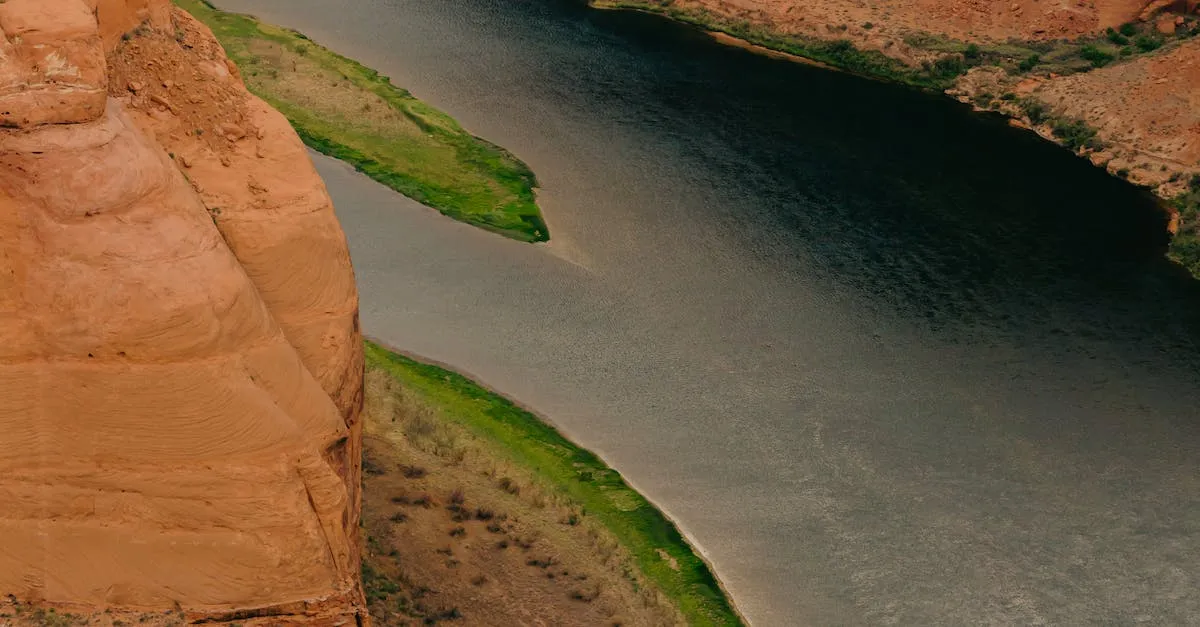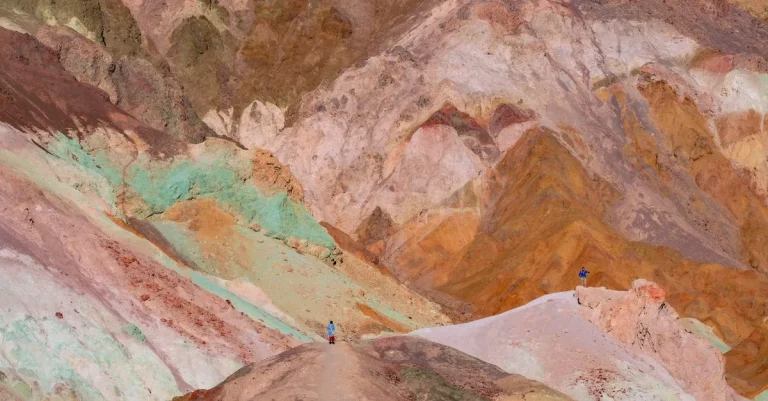Why Are There Two Colorado Rivers?
The Colorado River is one of the most famous and iconic rivers in the American West, carving out the Grand Canyon and providing water for major cities like Las Vegas. But did you know there are actually two rivers in the United States named “Colorado River”? If you’re wondering why two different rivers share the same name, here’s a quick answer: the original Colorado River flows from Colorado southwest to the Gulf of California. A later explorer named another river in Texas the “Colorado” thinking it was connected. Despite the confusion, the name stuck. Read on to learn more about the history and geography behind the tale of two Colorados.
The Original Colorado River
The Colorado River, one of the most iconic rivers in the United States, has an interesting history and unique geographical features. It is worth noting that there are two distinct sections of the Colorado River, each with its own set of characteristics and contributions to the region.
Rises in Colorado Rockies
The original Colorado River, often referred to as the “Upper Colorado River,” begins its journey high in the Colorado Rockies. It is born from the melting snow and glaciers in the Rocky Mountains, creating a source of freshwater that feeds into the river.
This pristine water source contributes to the river’s unique ecosystem and provides vital resources for both wildlife and human communities.
Flows Southwest Over 1,400 Miles
Once the original Colorado River is formed, it begins its long journey southwestward, covering a distance of over 1,400 miles. This section of the river passes through several states, including Colorado, Utah, Arizona, Nevada, and California.
Along its path, the river meanders through diverse landscapes, including canyons, valleys, and deserts, showcasing the natural beauty of the American Southwest.
Passes Through Grand Canyon
One of the most renowned features of the original Colorado River is its passage through the majestic Grand Canyon. Carved over millions of years, the Grand Canyon is a testament to the power of the river and the geologic forces at work.
The Colorado River’s journey through the Grand Canyon provides visitors with breathtaking views and a glimpse into the Earth’s geological history.
For more information on the Colorado River and its significance, you can visit the official website of the Grand Canyon National Park.
The Texas Colorado River
The Texas Colorado River is one of the two rivers with the name “Colorado” in the United States. It is important to note that the Texas Colorado River is not connected to the Colorado River that flows through the western part of the country.
Instead, it is a separate river system that is located entirely within the state of Texas.
Named by Early Texas Explorer
The Texas Colorado River gets its name from the early Texas explorer, Álvar Núñez Cabeza de Vaca, who first encountered the river in 1528. He named it “Colorado,” which means “colored” in Spanish, due to the muddy appearance of the river’s water.
It is believed that the river was given this name to distinguish it from the clearer waters of other rivers in the area.
Flows Southeast Under 600 Miles
The Texas Colorado River stretches for approximately 600 miles in length, flowing in a southeast direction. It originates in Dawson County, near the city of Lubbock, and travels through several major cities in Texas, including Austin and Bastrop, before reaching its final destination near Matagorda Bay.
Along its course, the river passes through diverse landscapes, including canyons, prairies, and wetlands.
Joins Gulf of Mexico Near Matagorda Bay
The Texas Colorado River ultimately joins the Gulf of Mexico near Matagorda Bay, providing an important outlet for its waters. The river’s mouth is located in Matagorda County, where it empties into the gulf, contributing to the overall water flow and ecosystem of the region.
This area is known for its rich biodiversity, with various species of birds, fish, and other wildlife depending on the river for their survival.
The Texas Colorado River, with its historical significance and ecological importance, serves as a reminder of the diverse and unique natural features found within the state of Texas. Its muddy waters, flowing for hundreds of miles, and eventual joining with the Gulf of Mexico make it an integral part of the region’s landscape and ecosystem.
How the Texas River Got Its Name
The Colorado River is one of the most iconic rivers in the United States, flowing through several states including Colorado, Utah, Arizona, and California. However, what many people may not know is that there are actually two rivers with the name “Colorado.”
One is the well-known Colorado River that flows through the western states, while the other is a smaller river located in Texas. So, how did the Texas river get its name?
Mistaken Belief They Were Connected
When European explorers first arrived in North America, they were not aware of the vast geography and complex river systems that existed on the continent. As a result, they often made assumptions and connections that turned out to be incorrect.
In the case of the Texas river, early explorers mistakenly believed that it was connected to the Colorado River in the west. This led them to name the Texas river the “Colorado,” meaning “colored” or “reddish” in Spanish, due to the silt and sediment carried by the river.
It wasn’t until later expeditions and surveys that it was discovered that the two rivers were not connected at all. The Texas Colorado River actually starts in the Texas Hill Country and flows southeast before eventually emptying into the Gulf of Mexico.
Despite this error, the name “Colorado River” stuck and has been used to refer to the Texas river ever since.
Honoring the “Real” Colorado
While the Texas Colorado River may have been misnamed, there is a reason why the explorers chose to associate it with the “real” Colorado River in the west. The western Colorado River is one of the longest rivers in the United States, stretching over 1,450 miles.
It is known for its scenic beauty, including the famous Grand Canyon, and its importance as a water source for millions of people.
By naming the Texas river after the Colorado River, the early explorers were paying homage to the grandeur and significance of the western river. They saw similarities in terms of the color and importance of the two rivers, even though they were not connected.
It was a way of honoring the “real” Colorado River and acknowledging its importance in the region.
Name Stuck Despite Error
Despite the mistake in naming, the Texas Colorado River has retained its name throughout history. It has become an integral part of the local culture and heritage, with towns, parks, and landmarks along its banks bearing the name “Colorado.”
The river continues to be a popular destination for outdoor enthusiasts, offering opportunities for fishing, boating, and other recreational activities.
So, next time you hear about the Colorado River, remember that there are actually two of them. While they may not be connected, both rivers hold their own unique charm and importance in the regions they flow through.
Effects of Sharing the Name
The fact that there are two Colorado Rivers has had several effects on both historical and modern contexts. Let’s explore the consequences of this unique naming situation.
Caused Confusion Historically
The existence of two Colorado Rivers has caused confusion and mix-ups throughout history. When Spanish explorers first arrived in the region in the 16th century, they named the larger river “Rio Colorado,” which translates to “colored river” in English.
This name was given due to the river’s reddish-brown color caused by sedimentation. However, when American explorers arrived in the 19th century, they encountered another river with the same name in what is now Texas.
This led to confusion among early settlers and cartographers who were attempting to map and navigate the area.
Did you know? The Spanish explorers initially named the Colorado River in present-day Texas the “Rio Colorado” as well, but it was later renamed the Brazos River to differentiate it from the larger Colorado River in the western United States.
Leads to Modern Mix-ups
The dual identity of the Colorado Rivers continues to cause mix-ups in modern times. Travelers, especially those unfamiliar with the region, often mistake one river for the other. This can lead to navigational challenges and misunderstandings, particularly for those planning outdoor activities such as rafting or fishing.
Additionally, the similar names can sometimes create confusion in discussions or research about the rivers, as people may inadvertently refer to the wrong Colorado River, leading to misunderstandings or inaccurate information.
Fun Fact: The Colorado River that flows through the Grand Canyon is often referred to as “The Mighty Colorado” due to its impressive size and breathtaking scenery.
Dual Identity Endures
Despite the confusion and mix-ups, the dual identity of the Colorado Rivers has endured over time. The unique naming situation has become a part of the rivers’ history and identity, adding an extra layer of interest and intrigue.
It serves as a reminder of the diverse cultural and historical influences in the American Southwest. While efforts have been made to differentiate the two rivers through regional naming conventions, the original names have persisted, creating a fascinating story that continues to captivate those who explore the region.
For more information about the Colorado Rivers, you can visit the official website of the United States Geological Survey at www.usgs.gov.
Conclusion
While having two major rivers share the name “Colorado” may seem odd, it’s a quirk rooted in early Western exploration. The original Colorado River far outpaces its smaller Texan counterpart, but they both carry the weight of a name linked to river exploration in the American West. Their intertwined histories remind us of the ambition and limits of knowledge in the 19th century.








